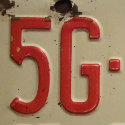
China is crushing it in 5G devices just as it has been in network rollout and subscriptions.
It shipped 162.8 million last year, according to figures from government think tank CAICT – that's 53% of the 308 million phones sold in China and 76% of the estimated 213 million 5G phones sold worldwide.
Chinese consumers' charge into 5G is only gaining momentum.
Last month, 27.5 million 5G devices were sold, up from 18.8 million in December and just 5.4 million a year earlier, CAICT revealed on Wednesday.
Two-thirds of all phones shipped in January were 5G-compatible, compared with 26.3% a year ago.
IDC has similar figures, saying China shipped 167.5 million 5G devices in 2020, including 60.1 million in the last quarter.
Oddly enough, while it accounts for the lion's share of 5G, China's share of worldwide smartphone sales actually declined last year to 25.2%, down from 26.7% in 2019. This likely reflects the expansion of the global smartphone market even in the teeth of the economic slowdown.
The dominance of home-grown brands is the other distinctive feature of the China market.
Last month domestic brands accounted for 84% of sales. By comparison, Apple and Samsung have 70% of the US market between them.
But this year the segment moves into new territory, thanks partly to 5G but more as a result of the US sanctions imposed on Huawei.
Want to know more about 5G? Check out our dedicated 5G content channel here on Light Reading.
Huawei's worldwide market share plummeted from 14.7% in Q3 to 8.4% in Q4, forcing the vendor to sell off its Honor unit, which was responsible for around a quarter of its handset sales.
Tech research firm Canalys said in a note two weeks ago "the rapid deterioration of Huawei's performance" had stalled the China market recovery.
Earlier this week CEO Ren Zhengfei said the company could survive without relying on device sales – its biggest source of revenue for the past two years – going as far as to claim it will take less than a year to recover lost revenue.
"It is possibly Huawei's toughest time as it is restrained to even serve its home market," said Canalys' vice president of mobility, Nicole Peng.
The company was unable to fulfil domestic demand in the foreseeable future, and rivals Oppo, Vivo and Xiaomi were vying to take its place, she wrote.
"The three are fighting to win over Huawei's offline channel partners across the country, including small rural ones, backed by huge investments in store expansion and marketing support.
"These commitments brought immediate results, and market share improved within mere months. 2021 will be clearly a year of aggressive expansion for Oppo, Vivo and Xiaomi."
— Robert Clark, contributing editor, special to Light Reading
Read more about:
AsiaAbout the Author(s)
You May Also Like











